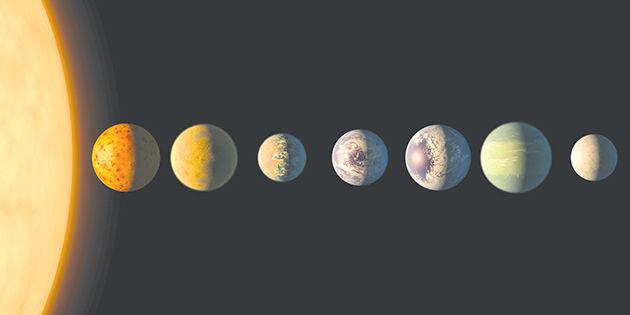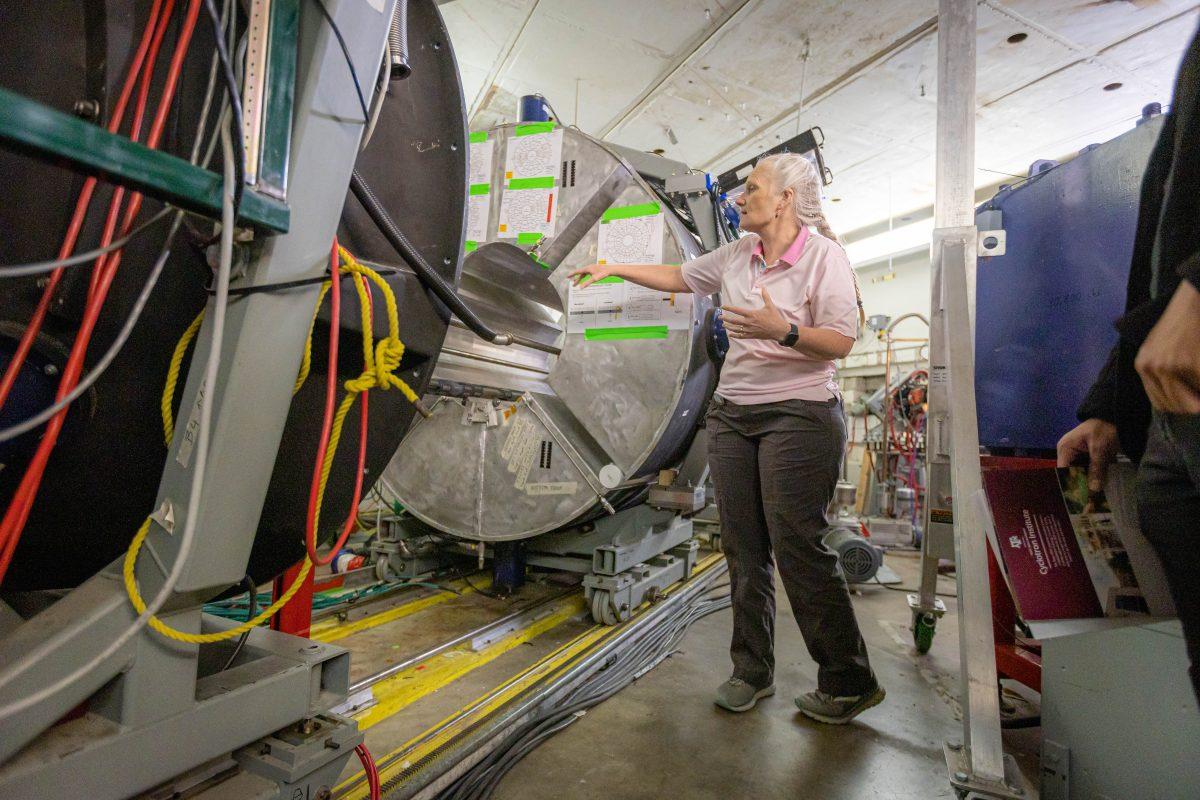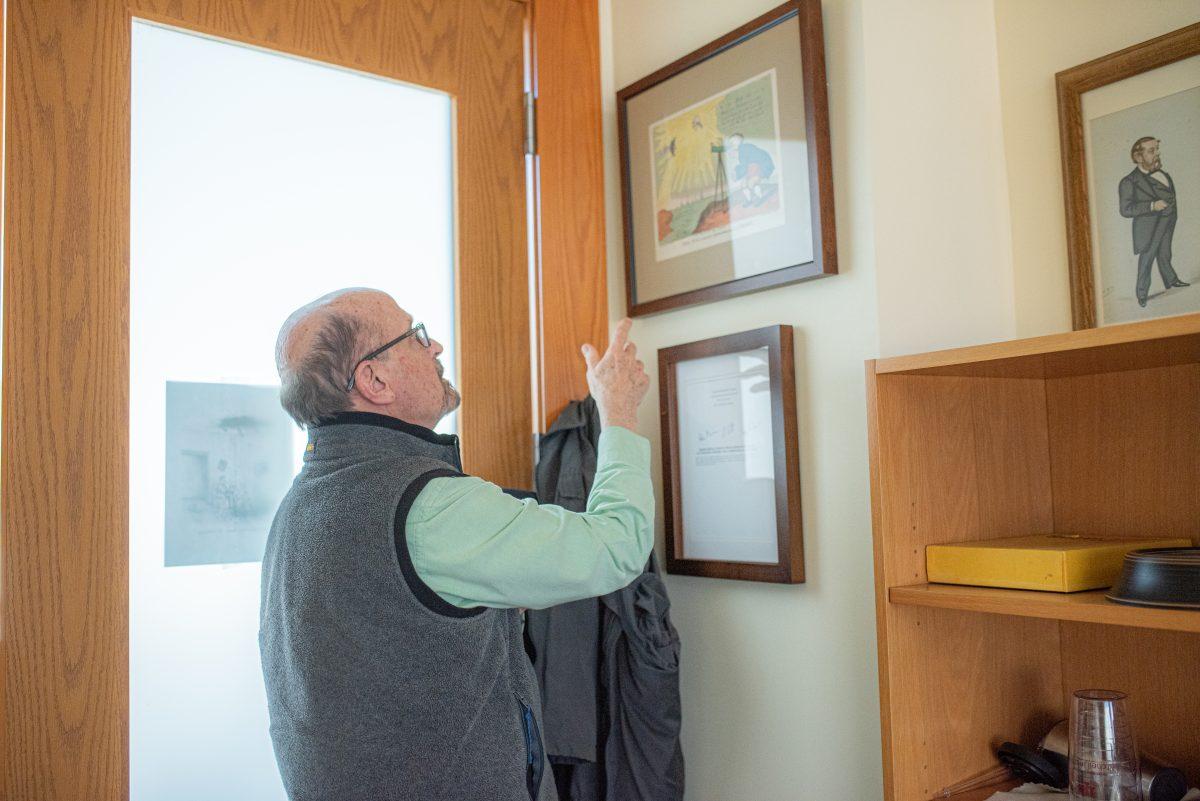The Battalion science and technology editor Josh Hopkins spoke with Darren DePoy, physics professor, about a recent discovery of seven earth-sized planets orbiting Trappist-1, a dwarf star about 40 light-years from Earth.
THE BATTALION: What makes the “Trappist-1” system so special?
DEPOY: Probably two reasons. We’ve found thousands and thousands of planets around other stars; this was sort of special because the planets that were found are basically about the size of the Earth and are likely to be roughly the mass of the Earth as well. The other thing that makes this unusual in sort of a discovery sense is that there is a lot of them. This is the first time we’ve seen a planetary system with this large a number of small planets, and that’s unusual in a sense that we don’t know about many other systems like that. It’s very likely there are lots of other systems like that out there in the universe, we just don’t know about them.
THE BATTALION: What are some of the implications of finding this system and what does it mean for us?
DEPOY: Well, it’s sort of a confirmation that there are planets kind of like the Earth out in the universe. That’s a good thing to confirm; the suspicion has been there that those Earth-like planets are possibly not uncommon, but you don’t know that until you go and measure them, something to tell you how frequent those things happen … There are a lot of stars in the universe — there’s 10 to the 10 stars or so in our galaxy and there is about 10 to the 10 galaxies in the universe. So the likelihood that there is other Earth-mass systems is pretty high, because even if only 1 percent of stars have Earth-like planets there is still a lot, and even if only 1 percent of those have water that’s still a lot. And even if only 1 percent of those have some kind of life that is still an enormous number of systems, but we would like to go and measure that. You can’t say one way or the other until you go and measure it.
THE BATTALION: This system is said to be about 40 light-years from Earth. What does that mean? How close is 40 light-years?
DEPOY: Forty light-years is a distance. It’s the distance over which light will travel in 40 years. That’s pretty close by the standards of these sorts of things. To give you a sense of what that means it takes about seven minutes for the light to get from the sun to us. A few years for light to get from us to the nearest other star, other than the sun. The size of our galaxy is about 100,000 light years. So, it’s still not close. On the scale of our solar system it’s pretty far away, but on the scale of our galaxy it’s pretty close.
THE BATTALION: From what we’ve seen there are three planets in the system in the “habitable zone.” What does this mean?
DEPOY: The habitable zone is a region around a star where if we imagined all of the light and energy you are getting from the star falling on the planet, depending on what kind of atmosphere the planet has — or not if it doesn’t have an atmosphere — then the conditions at the surface will be such that liquid water could exist. It’s thought that liquid water is an important ingredient in getting biology going, in getting life going. Kind of the definition of the habitable zone is we calculate that under a broad set of conditions liquid water could exist on the surface of these planets. It doesn’t mean it does, it means it could. An important criteria is whether or not those planets have atmospheres, if they have zero atmosphere liquid water can’t exist on the surface. If they’ve got a really super thick atmosphere like Venus, it will be really hot on the surface even if it’s not that close to the sun. So there is a lot of uncertainty still on whether there actually is water on the surface of those planets or not, and it depends a lot on what the atmospheres are like, or if they even have atmospheres.
THE BATTALION: What sort of research might follow from this find?
DEPOY: Obviously one of the big questions is do these things have atmospheres or not. And it turns out that in principle if you have a star, and the planet goes in front of it — that’s how these things were found you see a little dip in the amount of light you are getting from the star. When it’s transiting like that, some of the light from the star will skim through the atmosphere. So if you look very carefully during one of these events, you can see the impact of an atmosphere — if it is there — on the light from the star… So if the atmosphere has a whole lot of water in it — clouds — that will look different than if it doesn’t have any atmosphere at all. The atmosphere changes what the star will look like a little bit, but that’s a super hard measurement to make, and it really is not quite possible with the facilities that we have today. But in about 10 years, we are building facilities now that will be done in about 10 years that ought to enable that kind of measurement.
Q&A: What 7 new planets mean for science
March 2, 2017
Photo by Provided via NASA/JPL-Caltech
All seven of the planets orbiting “Trappist-1” are all roughly earth sized, and three may have water.
Donate to The Battalion
Your donation will support the student journalists of Texas A&M University - College Station. Your contribution will allow us to purchase equipment and cover our annual website hosting costs.























